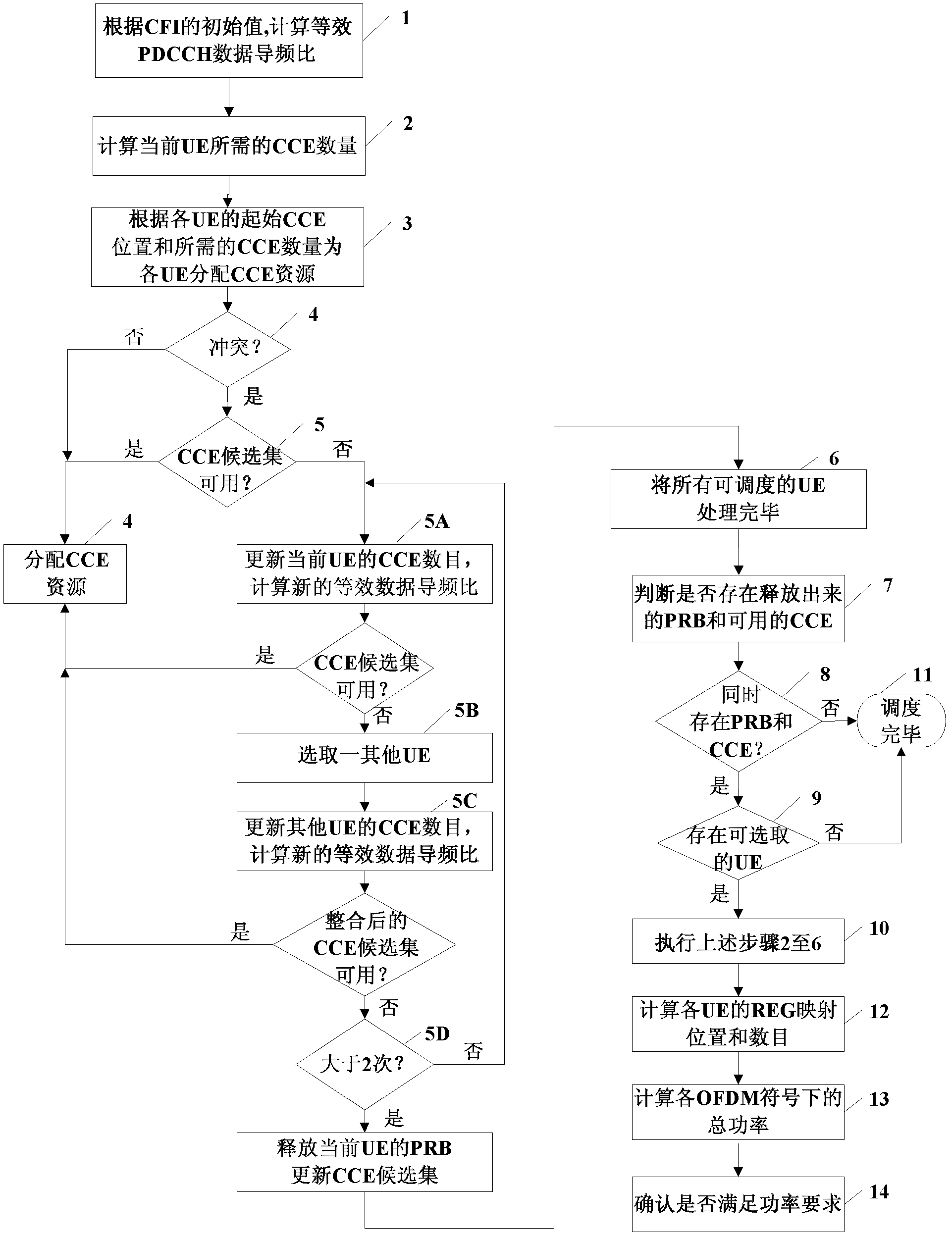Resource scheduling method and device in long term evolution system
A long-term evolution system and resource scheduling technology, applied in the field of resource scheduling, can solve the problems of waste of PDCCH and PDSCH resources, CCE resources cannot be allocated at the same time, affecting downlink system throughput, etc., to reduce PDCCH collisions, improve throughput and online users. Quantity, the effect of improving resource utilization
- Summary
- Abstract
- Description
- Claims
- Application Information
AI Technical Summary
Problems solved by technology
Method used
Image
Examples
Embodiment 1
[0026] The main technical concept of this solution is: after the link adaptive adjustment, when there is still a conflict of CCE resources, first reduce the number of CCEs required by the current UE (or called this UE) and increase the power at the same time, and judge whether the resources are satisfied. allocation requirements; if not satisfied, reduce the number of CCEs required by other UEs, and then judge whether the resource allocation requirements of this UE can be met; ” to adjust the number of CCEs and power successively.
[0027] The main reason why this solution adopts the above-mentioned alternating power adjustment method instead of multiple CCE number and power adjustment methods of "only this UE" to optimize resource allocation is that if only the number of CCEs of this UE is adjusted, the power offset The compensation will be very large, the difference between the UE EPRE and the average EPRE is too large, the influence on the performance is unstable, and it is...
Embodiment 2
[0057] In the second embodiment, after using the power adaptive operation in the first embodiment to update the number of PDCCH CCEs required by the UE, the equivalent PDCCH data-to-pilot ratio of the corresponding UE is updated at the same time, so as to ensure that under the same OFDM symbol port p The sum of the power of each UE is not greater than the maximum power allowed by the system.
[0058] In Embodiment 2, firstly, TDPS / FDPS / SDPS scheduling is executed, and secondly, an operation of acquiring the initial value of CFI is executed. For the operation of these steps, refer to the above steps 11 and 12. Again, see figure 2 , proceed as follows:
[0059] 1. Calculate the equivalent PDCCH data-to-pilot ratio according to the initial value of CFI;
[0060] 2. According to the equivalent PDCCH data-to-pilot ratio, combined with the channel quality information of the UE, calculate the number L of PDCCH control channel elements CCE required by the current UE k .
[0061] ...
Embodiment 3
[0118] In Embodiment 2, power adjustment is only performed on UEs involved in CCE conflicts. At this time, there is a certain degree of power waste for UEs that do not need to perform CCE conflict adjustments.
[0119] In order to further optimize the power of this part and improve resource utilization, in the solution of this embodiment, power adjustment is performed on all schedulable UEs so that the power of the UEs only meets the demodulation threshold.
[0120] The main difference between the processing method of the third embodiment and the second embodiment is:
[0121] In the above step 2, the number of CCEs L of UE k is calculated k Finally, adjust the power at the same time, so that the power can just meet the target demand without causing waste. The adjustment amount is:
[0122] Δ sin r k = SINR t arg ...
PUM
 Login to View More
Login to View More Abstract
Description
Claims
Application Information
 Login to View More
Login to View More - R&D
- Intellectual Property
- Life Sciences
- Materials
- Tech Scout
- Unparalleled Data Quality
- Higher Quality Content
- 60% Fewer Hallucinations
Browse by: Latest US Patents, China's latest patents, Technical Efficacy Thesaurus, Application Domain, Technology Topic, Popular Technical Reports.
© 2025 PatSnap. All rights reserved.Legal|Privacy policy|Modern Slavery Act Transparency Statement|Sitemap|About US| Contact US: help@patsnap.com



